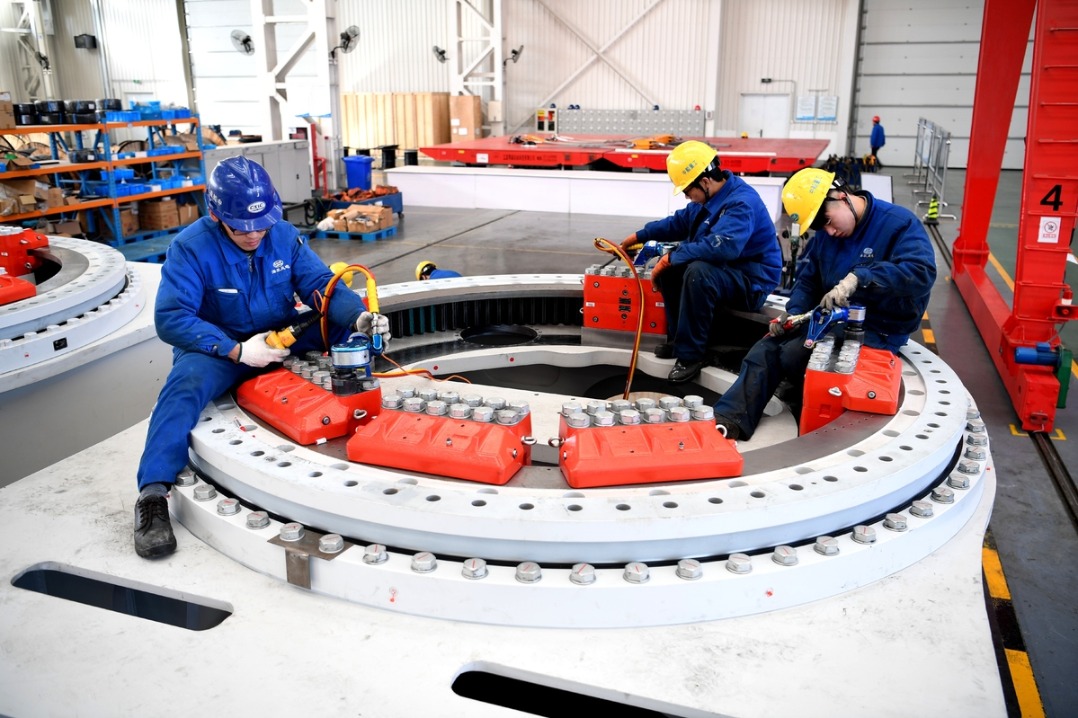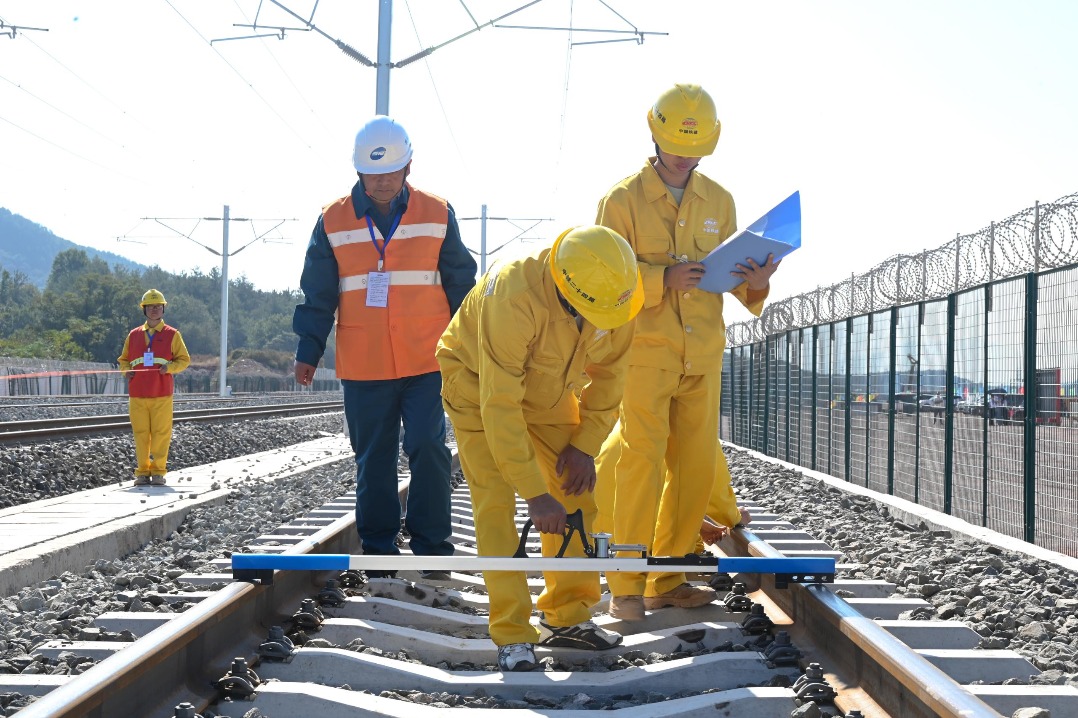China's exports integrating into global supply chains


During the global economic recovery and intensifying trade tensions, China's exports continue to attract global attention. In recent years, the country's total exports grew from 17.24 trillion yuan ($2.41 trillion) in 2019 to 23.77 trillion yuan of late. This period has also witnessed a noticeable trend toward diversification in both export destinations and products.
Export growth
In 2016, China's exports to the United States were valued at 2.54 trillion yuan. Despite trade frictions initiated by then-president Donald Trump in 2018, US-bound exports had risen to 3.87 trillion yuan by 2022. In 2023, this figure slightly decreased to 3.52 trillion yuan, but it still represented an over 1.3-fold increase from 2016. From January to May 2024, China's exports to the US stood at 1.39 trillion yuan, a 3.6 percent increase year-on-year.
Amid rising inflation in the US, cost-efficient Chinese products have helped US households reduce living costs and enhance their purchasing power, particularly benefiting middle- and lower-income groups. These benefits have driven the overall increase in China's exports to the US.
Simultaneously, exports to markets involved in the Association of Southeast Asian Nations, Mexico, Central Asia and Arab nations have shown robust growth. ASEAN is now the largest trading partner of China, with China's exports reaching 3.71 trillion yuan in 2023, maintaining the high level seen in the previous year. The country's exports to Central Asia totaled 436.71 billion yuan in the same year, up 53.77 percent year-on-year. Exports to Arab countries amounted to 1.28 trillion yuan last year, an 11.72 percent increase year-on-year. Notably, exports to the United Arab Emirates and Saudi Arabia increased by 9.78 percent and 19.9 percent, respectively, year-on-year in 2023.
From January to May this year, exports to these regions continued to rise. Exports to ASEAN totaled 1.68 trillion yuan, up 13.5 percent year-on-year, with notable increases to Laos, Vietnam, Cambodia and Indonesia. Exports to Central Asia amounted to 179.22 billion yuan, up 20.36 percent year-on-year. Exports to Arab countries amounted to 581.93 billion yuan, a year-on-year increase of 14.79 percent, with exports to the UAE growing by 18.82 percent and to Saudi Arabia by 15.28 percent.
Green evolution
With diversified export destinations, China's range of products sold overseas has broadened. A few years ago, clothing, furniture and home appliances dominated exports. In 2023, electric passenger vehicles, lithium-ion batteries and solar panels had become the fastest-growing export goods, totaling 1.06 trillion yuan, an increase of 29.9 percent. The rise in green energy-related products not only promotes trade with various regions, but also supports the global shift toward green and low-carbon production.
Private and foreign-invested enterprises are key to China's exports. In 2023, the number of foreign trade operators with import and export records for the first time exceeded 600,000, including 556,000 private enterprises. Private enterprises accounted for 14.74 trillion yuan of exports, representing 62 percent of the total export value for that year. Foreign enterprises exported 6.78 trillion yuan, accounting for 28.5 percent of the national total. The establishment of 21,764 new foreign-invested enterprises marked a 17.4 percent year-on-year increase in the number of such enterprises.
As China adjusts its export structure, many foreign firms are reshaping their investment strategies within the country. Production lines are shifting from mobile phones, computers and home appliances to high-tech products such as new displays and high-performance batteries. Notably, investment in research and development by foreign firms is growing.
For instance, BMW Group announced a 20-billion-yuan investment plan for new energy vehicle production at its Shenyang, Liaoning province base last year. Likewise, AstraZeneca, a multinational biopharmaceutical company, invested $475 million in a new drug plant in Wuxi, Jiangsu province. From January to May 2024, the manufacturing sector attracted 117.1 billion yuan in foreign investment, while that in high-tech manufacturing stood at 50.41 billion yuan, with its share in total investment rising by 2.7 percentage points compared with a year ago. These changes reflect China's robust industrial and supply chains in emerging fields, such as NEVs, and highlight the overall upgrade in the country's industrial structure.
Market expansion
Against a complex global economic and political backdrop, Chinese companies are expanding investments all over the world to tap wider global markets. In 2022, China's total outbound direct investment in all industries was close to 985.37 billion yuan. In 2023, it exceeded 1 trillion yuan, marking a 5.7 percent increase year-on-year, with a primary focus on Southeast Asia, Africa and Latin America, where those investments have driven local economic development and employment. From January to May, China's total industrial investment abroad reached 497.85 billion yuan, up 13.20 percent year-on-year.
Chinese companies are transforming into multinational corporations, deeply participating in global supply chains and integrating into global resources such as raw materials and components. By bringing technology and innovation to other countries, Chinese companies have helped upgrade local industries and improve efficiency.
The growth of China's exports is both driven by, and offers a solution to, major global challenges, including high inflation, poverty and global warming.
Following the COVID-19 pandemic, poverty rates have risen in some developing countries. According to the 2023 Global Multidimensional Poverty Index report by the United Nations Development Programme, approximately 1 billion people live in acute multidimensional poverty globally, half of whom are children. Since 2020, the extreme poverty rate has increased for the first time since 1998.More cost-efficient products are needed to improve the living standards of poor populations.
Additionally, global warming is accelerating, with 2023 marking the highest global average temperature since records began in 1850.Extreme weather events such as heavy rains, hurricanes and hail are becoming more frequent. Addressing these challenges requires establishing an integrated trade system. Such a system facilitates efficient integration, benefits disadvantaged populations and promotes green, low-carbon development.
The writer is a professor of economics and finance and deputy head of the School of Economics and Management at Shanghai-based Tongji University.
The views don't necessarily reflect those of China Daily.




































